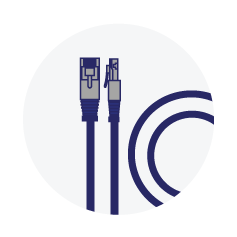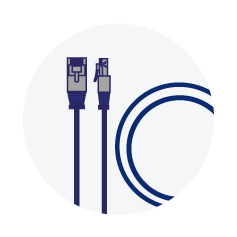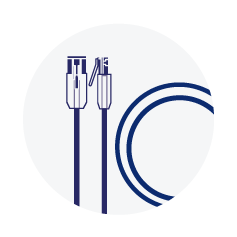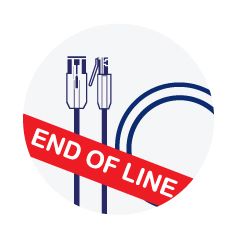Network Patch Leads


Ethernet patch leads, also known as Ethernet patch cables or network patch cables, are essential components in networking setups. These cables are used to connect devices, such as computers, routers, switches, and servers, to establish reliable and high-speed network connections. CERTECH Ethernet patch leads are available in various lengths, colours, and categories (such as Cat6 & Cat6A) to suit different network requirements. They are designed with RJ45 connectors on both ends to ensure compatibility with standard Ethernet ports. With their durable construction and superior data transmission capabilities, Ethernet patch leads provide seamless connectivity, enabling efficient data transfer and communication within a network infrastructure.
Ethernet patch leads are essential for establishing reliable and high-speed network connections. Our selection includes Cat6 and Cat6A cables, both shielded and unshielded (STP/UTP), designed to deliver superior performance. With varying lengths and colour options, our patch leads ensure seamless connectivity while maintaining signal integrity. Choose from a range of quality cables to meet your networking needs and experience fast and efficient data transfer in your network infrastructure.
What is the difference between Cat6 and Cat6A?
The main difference between Cat6 and Cat6A Ethernet leads lies in their performance capabilities.
Cat6 cables are designed to support up to 1 Gigabit per second (Gbps) data transfer speeds over a maximum distance of 55 meters. They are suitable for most residential and commercial network applications.
On the other hand, Cat6A cables are an enhanced version that can support higher data transfer speeds of up to 10 Gigabits per second (10 Gbps) over longer distances of up to 100 meters. Cat6A cables are more commonly used in environments where high-bandwidth applications and future-proofing are essential, such as data centers, enterprise networks, and advanced multimedia setups.
In terms of construction, Cat6A cables have stricter specifications for shielding and crosstalk prevention, ensuring better signal quality and reduced interference compared to Cat6 cables.
When choosing between Cat6 and Cat6A Ethernet leads, it's important to consider your specific requirements for data speed, distance, and the network environment to ensure optimal performance and compatibility.
When should you choose Shielded over Unshielded Ethernet Patch Leads?
Choosing shielded (STP) or unshielded (UTP) Ethernet patch leads depends on the specific environment and potential sources of interference. Here are some considerations:
-
Environment: If your network setup is in an environment with high levels of electromagnetic interference (EMI), such as industrial settings, hospitals, or areas with heavy electrical equipment, shielded Ethernet patch leads are recommended. The shielding helps minimise the impact of external EMI, reducing the chances of signal degradation and data errors.
-
Cable Routing: Shielded cables provide additional protection against interference caused by neighboring cables. If your network cabling is routed in close proximity to power cables, fluorescent lights, or other sources of electrical noise, shielded Ethernet patch leads can help mitigate the impact of such interference.
-
Future-Proofing: If you anticipate future network expansion or technology upgrades that may introduce higher levels of interference, using shielded Ethernet patch leads from the start can provide a more robust and reliable network infrastructure.
However, in many standard office or home networking environments without significant EMI concerns, unshielded Ethernet patch leads (UTP) are often sufficient and more cost-effective. They are widely used and compatible with most networking equipment.
Ultimately, the decision to choose shielded or unshielded Ethernet patch leads depends on assessing the specific environment, potential sources of interference, and the desired level of network performance and reliability.






